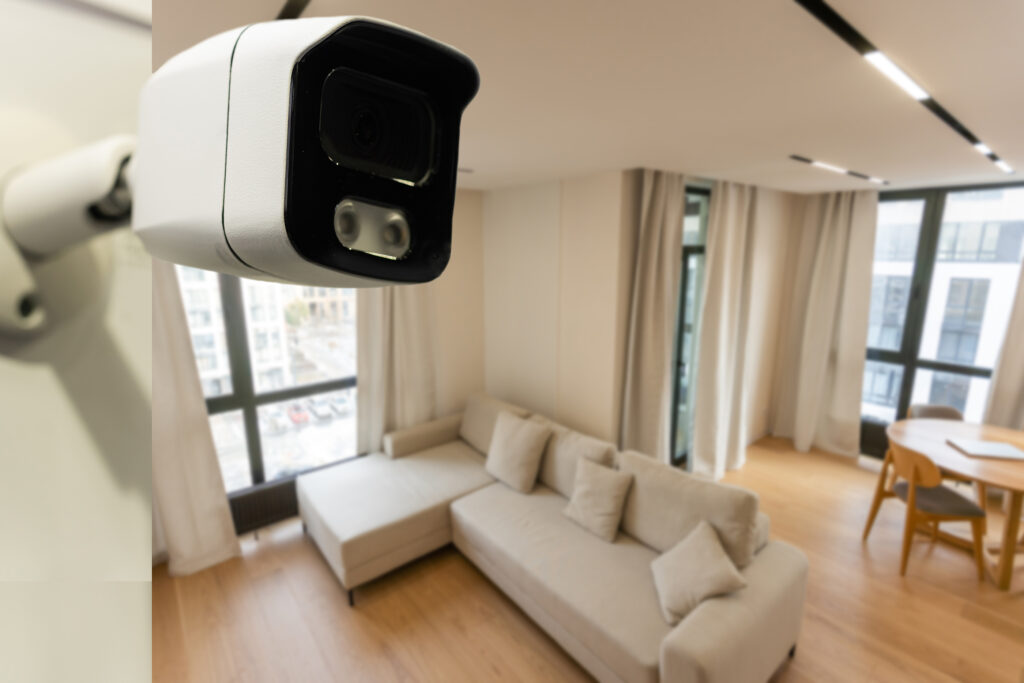
Have you recently purchased your first home? Or are you concerned about keeping your home safe and secure? Home security should be at the top of your to-do list, especially with the post-pandemic increase in crime.
The crime rate in your neighborhood will determine the required—and optional—security measures for your home. For example, the risks of a home in a suburban neighborhood will differ from one in a rural area. Security measures are typically based on neighborhood size, population, and law enforcement presence.
Protecting one’s residence is a key component of home ownership and includes formulating a family response plan in the event of an incident. Such a plan can be as simple as meeting in a certain room and identifying who will call 911.
Even though Integras Intelligence does not specialize in home safety and security, we want to share a few recommendations with clients and readers.
Residential Safety and Security
Invest in security cameras and an alarm system. When installing cameras, focus on entry points. Then, move on to securing other locations. The goal is to monitor the entire perimeter of your home with cameras, a full 360º view.
Regarding alarm systems, homeowners have many options. Many alarm systems on the market today include enhanced and upgraded features, but a basic setup should include door sensors, glass-break detection, and window sensors. You can purchase a DIY system or contract a professional company to do the job. The benefit of using a company is 24/7 monitoring. If you are not home—or even asleep—and the alarm activates, law enforcement will automatically be notified.
Keep in mind that cameras and alarm systems are not guaranteed to prevent crimes. They will hopefully deter criminals, alert you of a security incident, and notify the local authorities.
Lock entry doors with a deadbolt, using (at least) three-inch screws to secure the strike plate. You can also apply this measure to door handle strike plates and door hinges. This upgrade will make it very difficult for someone to break down your door. For sliding doors, consider installing a security bar that does not allow the door to slide open when engaged.
In addition, always lock your garage doors. Many families leave their garage entry door unlocked because the garage itself is locked. This leads to an important note: be careful if you use a garage door opener in your vehicle. Breaking into your car and clicking the garage button will give a potential thief easy access to your home if the entry door is unlocked.
Invest in motion sensor lights, landscape lighting and porch lights. Criminals do not want to get caught; they want to stay out of sight and out of mind. Try to avoid dark areas near points of entry. A side window without exterior lighting presents an opportunity for a potential burglar to enter your home.
The same concept applies to doors. Many homes have porch lights, but the rear of the home is often pitch black, without any light. Even if your home does not have an existing light fixture, battery- and solar-powered lights can provide an inexpensive and convenient option for additional lighting. Lighting your house and all entry locations is an excellent deterrent to keeping unwanted guests away from your property.
Use a safe to protect important documents and valuables. There are many options to choose from, including:
- Burglary safe. These safes tend to be designed with thicker material and added weight for extra protection.
- Jewelry safe. These smaller safes usually have shelving to accommodate rings, necklaces, and watches. Many include a soft liner to prevent scratching.
- Floor safe. As the name suggests, this option is embedded into the floor of your home. This type of safe is easily hidden and very difficult to remove because it is encased in concrete.
- Wall safe. Like the floor safe, this type of safe is secured to the studs and offers great concealment. You can hang a mirror or artwork to hide it from visitors.
Store your car key fob in a bag or pouch that blocks the signal. Also, keep the bag away from doors and windows. Relay devices trick your car into thinking the key fob is detected. These gadgets have gained popularity with criminals over the years and have affected many individuals, especially in residential areas. People with relay devices will walk around a neighborhood and attempt to open car doors. When the relay device receives a signal, the car unlocks, and the person will take off in your car.
We hope these recommendations will help you keep your home, valuables and property safe.












